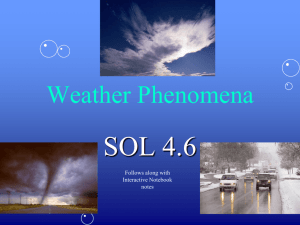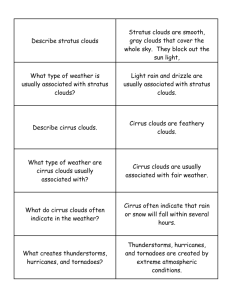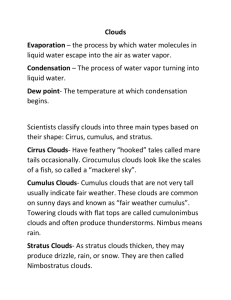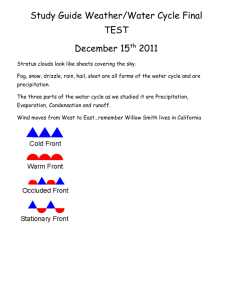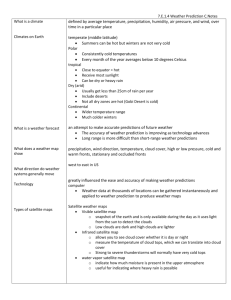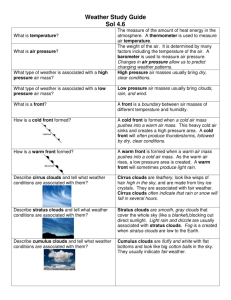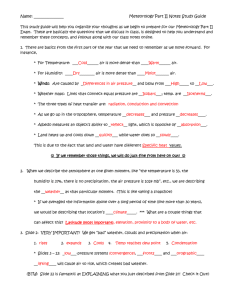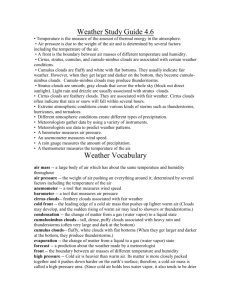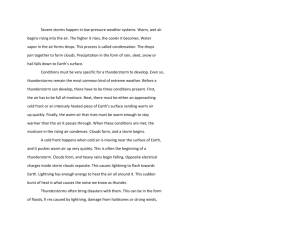air masses and fronts
advertisement
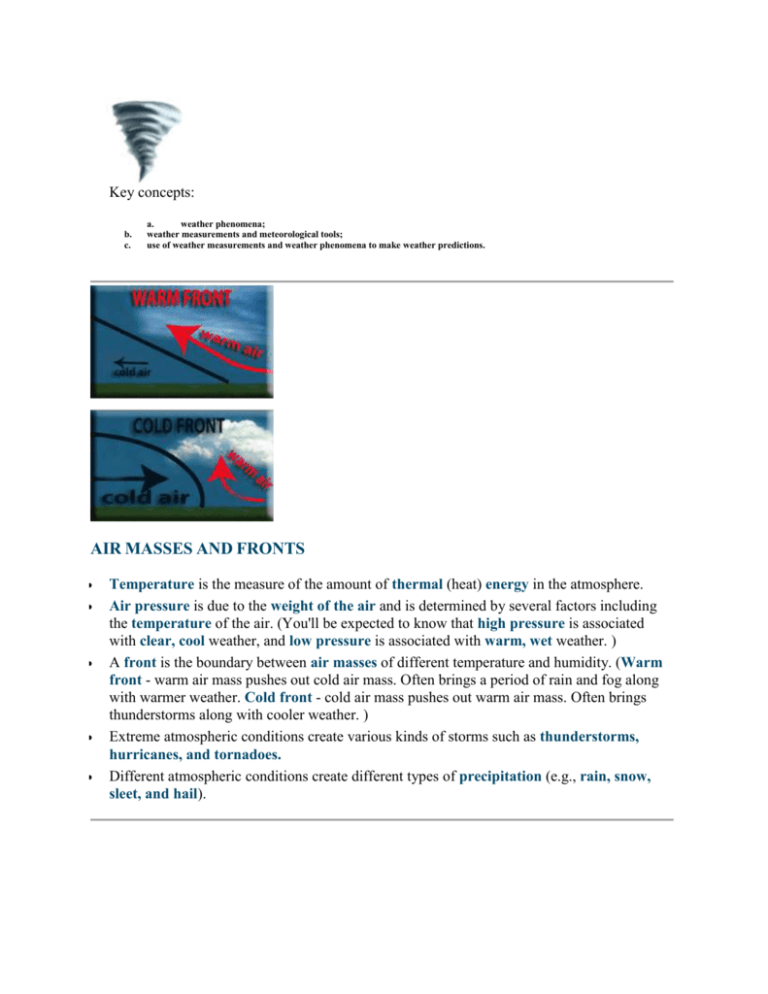
Key concepts: b. c. a. weather phenomena; weather measurements and meteorological tools; use of weather measurements and weather phenomena to make weather predictions. AIR MASSES AND FRONTS Temperature is the measure of the amount of thermal (heat) energy in the atmosphere. Air pressure is due to the weight of the air and is determined by several factors including the temperature of the air. (You'll be expected to know that high pressure is associated with clear, cool weather, and low pressure is associated with warm, wet weather. ) A front is the boundary between air masses of different temperature and humidity. (Warm front - warm air mass pushes out cold air mass. Often brings a period of rain and fog along with warmer weather. Cold front - cold air mass pushes out warm air mass. Often brings thunderstorms along with cooler weather. ) Extreme atmospheric conditions create various kinds of storms such as thunderstorms, hurricanes, and tornadoes. Different atmospheric conditions create different types of precipitation (e.g., rain, snow, sleet, and hail). CLOUD TYPES Cirrus, stratus, cumulus, and cumulo-nimbus clouds are associated with certain weather conditions. Cumulus clouds are fluffy and white with flat bottoms. They usually indicate fair weather. However, when they get larger and darker on the bottom, they become cumulo-nimbus clouds. Cumulo-nimbus clouds may produce thunderstorms. Stratus clouds are smooth, gray clouds that cover the whole sky (block out direct sunlight). Light rain and drizzle are usually associated with stratus clouds. Cirrus clouds are feathery clouds. They are associated with fair weather. Cirrus clouds often indicate that rain or snow will fall within several hours. METEOROLOGICAL TOOLS Meteorologists gather data by using a variety of instruments. Meteorologists use data to predict weather patterns. A barometer measures air pressure. An anemometer measures wind speed. A rain gauge measures the amount of precipitation. A thermometer measures the temperature of the air.

